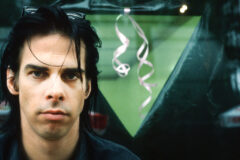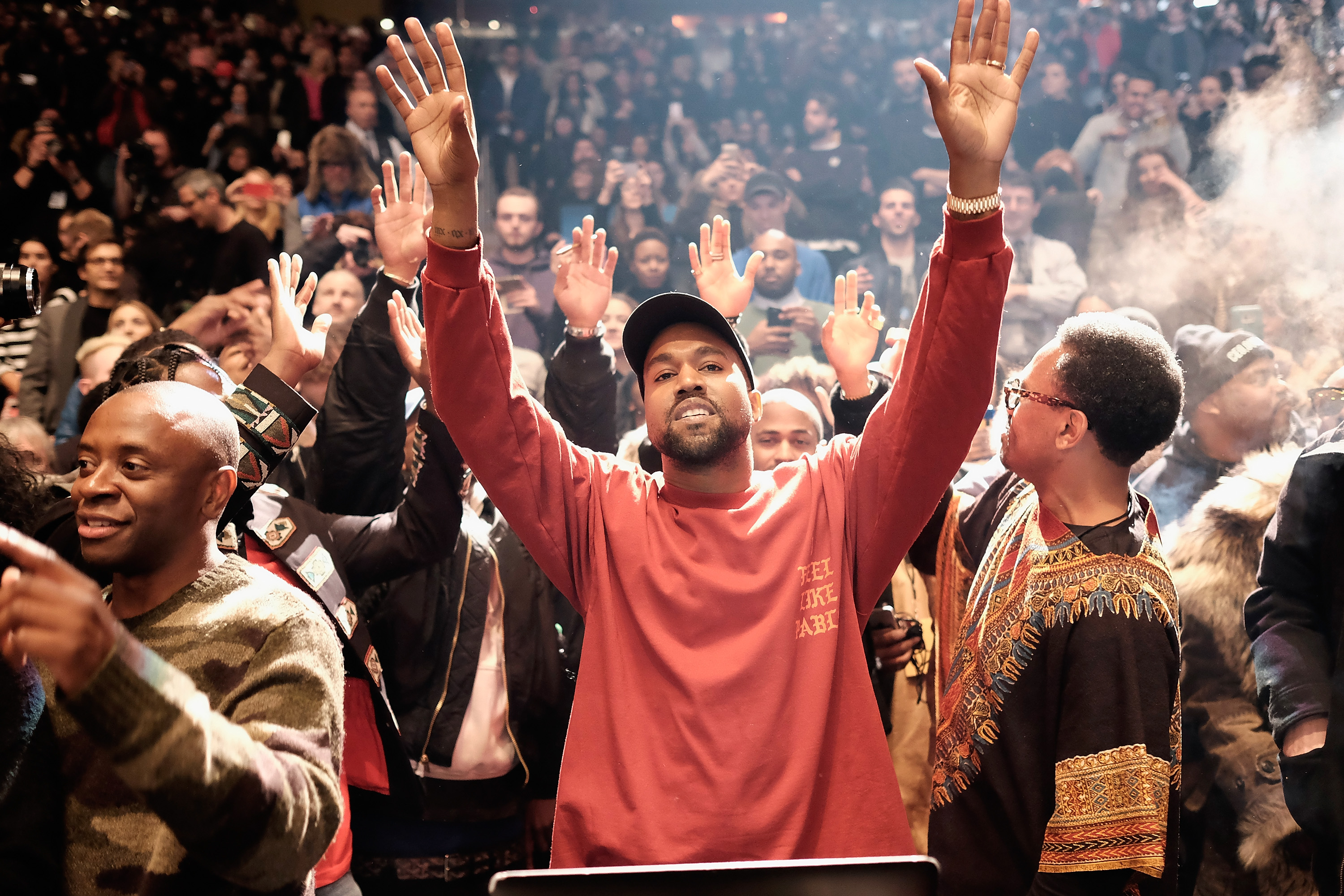No matter the election cycle, there comes a moment when the campaign bus pulls up in front of a church in a predominantly African-American neighborhood and the candidate descends to partake in services, clap along to gospel music and pose for a pandering photo-op. So amid the sordid and abject parade that was the general election in the year 2016, time was taken out for Hillary Clinton to preach instead of stump in Oakland and for Donald Trump to awkwardly sway during a service in Detroit, looking like a villainous 80s film landlord about to tear down a church to make way for a high-rise.
They weren’t alone. Artists from all genres–hip-hop, electronic music, rock–also dipped into Sunday services, nodded along to the sermon and then went back to the studio, infusing gospel music into their sound. Listen closer to the year’s music highlights–by its biggest stars and its underground standouts–and you can find them hearing the Holy Ghost within themselves and putting it to tape. Kanye West and Chance the Rapper both embraced their roots in the Chicago church to stunning effect on The Life of Pablo and Coloring Book, two of 2016’s standout albums. You could hear gospel luminary Kirk Franklin prominently featured on both albums, and you could also catch him as he traversed the country most of the year with his comeback “20 Years in One Night” tour. Newcomers like Noname, Jimi Tents and serpentwithfeet infused gospel with soul jazz, hip-hop and avant electronics, respectively.
Other artists came to the music for the comfort and celebratory aspects it imparts during trying times such as these. Grappling with the tragic death of his 15-year-old son Arthur, Nick Cave sought solace in the solemnness of gospel on his grief-stricken album, Skeleton Tree. On the other end of the emotional spectrum, dance music legends like Robert Hood and Terrence Parker as well as Norwegian upstart Lido alike drew on the ecstasy that underpins the music of the church, translating that to a Holy Spirit that roved dance floors from Berghain to Coachella.

Also Read
Nick Cave Slow Pours the Joe
When the Red Bull Music Academy hosted a month’s worth of concerts and events in New York City back in May (featuring the likes of ANOHNI and A$AP Rocky), they capped the proceedings with a night given over to celebrating gospel in dance culture. It featured sets by Hood (under his Floorplan alias, which he once described as “minimal music for catching the Holy Ghost”), Parker and a one-off performance from gospel group the Joubert Singers, whose rapturous 1985 track “Stand on the Word,” has been praised by everyone from Jersey Club pioneer Tony Humphries to Pet Shop Boys to Justice. For a culture that often plays up its hedonism and irreverence, celebration of this 31-year-old piano-laced wonder with the ecstatic testimonial of “That’s how the good Lord works!” showed how, on a great night out, God’s message can still be gleaned from under the kick drums.
“My vibes that I brought were actually gospel vibes,” Chance the Rapper told GQ about the Kanye West sessions that would ultimately yield The Life of Pablo. “I was like…let’s make some glory songs.’” Those sessions ultimately informed Chance’s third mixtape, the kaleidoscopic Coloring Book. Gospel arrangements flow through the vocal hooks on the album and on a song like “Blessings,” Chance works in references to Books of Chronicles and Fred Hammond & Radical for Christ’s “Let the Praise Begin.”
But it’s Chance’s verse on TLOP’s opening track that remains one of the defining musical moments of the year, the 23-year-old rapper outshining ‘Ye, The-Dream, Franklin, his verse as resplendent as Kelly Price’s soaring vocals. In an astonishing verse that speeds and slows, pivots yet stays on track, Chance nods to Psalms and the Book of Luke and Book of Martin. He also alights on the children’s gospel hymn-turned-Civil Rights anthem of “This Little Light of Mine.”
“Gospel music allows us to become closer to God and closer to each other,” gospel singer Marvin Sapp said, and while proximity to God is a worthy goal no matter the year, that ability to connect and draw closer to others in a community might be gospel’s most vital lesson for this year. In the post-election malaise, as pundits and your Facebook friends alike despair over liberal bubble worlds (or is that a rural bubble?) and echo chambers, music as a means to attain a deeper connection, both to a higher power and to those gathered around us, in a club or concert hall or else queuing for Saint Pablo ticket refunds, can be a powerful thing going forward.
The black church has always been a source of strength, resilience and perseverance for its parishioners and community, a beacon amid the dark times of Jim Crow and the segregation. When the Ku Klux Klan shoved dynamite beneath the front steps of the 16th Street Baptist Church in Birmingham fifty-three years ago, when Dylann Roof sat in the pews during prayer service at Emanuel African Methodist Episcopal Church in Charleston last year, it wasn’t just to kill African-Americans (though it was that, too) as much as it was to strike at the heart itself, to prove the church was no longer a source of refuge.
In taking up gospel music, in taking up these songs, in revealing how they still course through hip-hop, rock and dance music, it not only fortified these institutions still under attack, but revealed a glimmer of hope still to be had in the otherwise baleful year. There may be different motives for why so many artists drew on the sound of the church this year, but an observation from gospel singer Yolanda Adams stands out. “There is a sound that comes from gospel music that doesn’t come from anything else,” she said. “It is a sound of peace. It is a sound of, ‘I’m going to make it through all of this.’” It’s something to keep close at heart and in our earbuds for the grim year that lies ahead.




